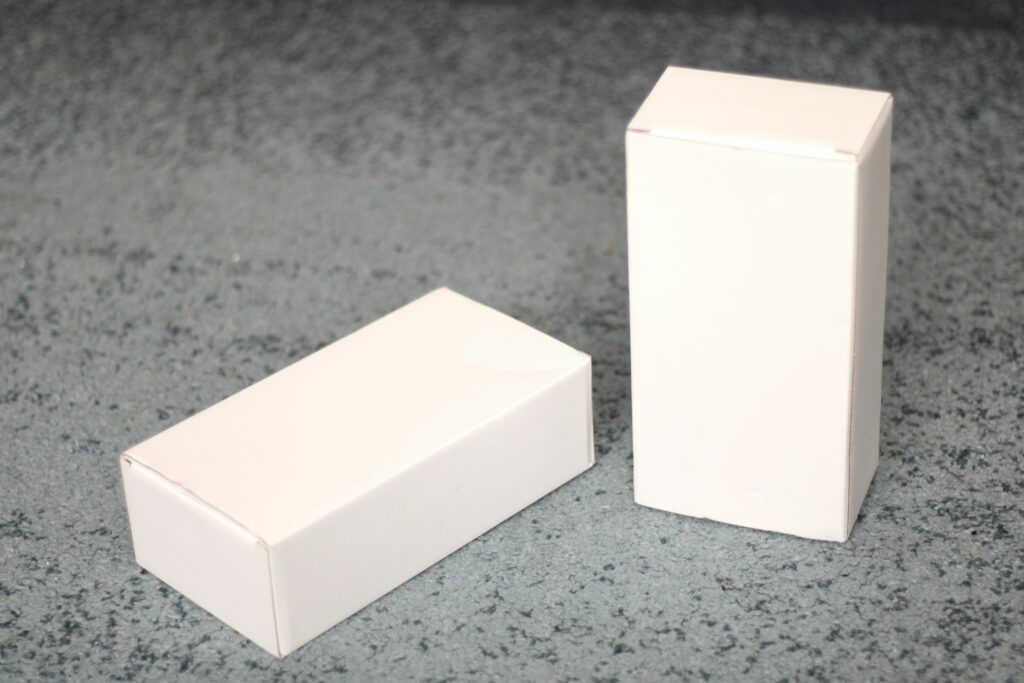

Byline: Julie Willsie, Packaging Advisor, RLG Healthcare
Sustainability is an increasing priority in healthcare, but for medical device manufacturers, making real progress can be complex. Regulatory constraints, sterilization requirements, and patient safety standards often make primary packaging, such as pouches, blisters, or trays difficult and time-consuming to change. Even minor material shifts can trigger costly revalidation, new biocompatibility testing, or FDA resubmissions.
That’s why secondary packaging may be a more practical entry point for sustainability.
Secondary packaging- including cartons, inserts, and labels- still requires careful evaluation, but it offers greater flexibility for adopting environmentally responsible materials and technologies without disrupting core regulatory approvals.
Here are five areas where medical device manufacturers are finding success:
1.) Recycled-Content Cartons
Switching from virgin fiber to higher-recycled content boards (like Solid Unbleached Sulfate or Coated Unbleached Kraft) is gaining traction. Medical Device Manufacturers can help hospital staff and end users know that cartons are recyclable and made with chain-of custody certifications with easy-to-read logos. Further details can be added noting that unbleached stock makes less wastewater and is more eco-friendly.
The challenge lies in ensuring that these materials can withstand supply chain demands: compression, humidity, and temperature swings. That’s where lab validation becomes critical.
2.) Packaging Size and Right-Sizing
Over-engineered or oversized packaging increases material use, shipping volume, and costs. Medical Device Manufacturers (MDMs) can right-size cartons to the device and IFU requirements (especially when moving to eIFUs), which can cut down on waste and improve palletization efficiency. More companies are adopting hybrid approaches, using QR codes on cartons or labels to provide access to eIFUs while still meeting global labeling requirements. There are also online platforms available through companies like RLG Healthcare to provide options for electronic, digitally produced, or warehoused stock.
For printed IFUs, companies can also light-weight the stock, for example using thin papers like 24#-27# text.
3.) RFID and NFC Integration
As supply chains become smarter, embedding RFID or NFC into secondary packaging boosts traceability and inventory management while cutting manual processes and waste. These technologies also support cold chain tracking and compliance reporting. This is especially important with traceability requirements that are increasing with regulations like EU MDR and UDI.
By adding RFID and NFC into existing label workflows, MDMs increase operational efficiency, which reduces environmental impact through better logistics and lower spoilage rates.
4.) Recyclable Label Liners
Standard label liners are typically landfilled, but newer recyclable liners are emerging as a more sustainable option.
New recyclable liners allow for waste reduction without changing the label itself. With 100% curbside recyclability, and liner-compatible adhesives, this is a simple swap with a big sustainability payoff. In addition, the material can be made with 100% Post Consumer Waste stock, increasing circularity and recycling.
Implementation depends on compatibility with existing applicators, production run speed, liner recycling infrastructure, and adhesive performance. All of which require careful testing before rollout.
5.) Electronic IFUs (eIFUs)
Reducing or eliminating printed Instructions for Use (IFUs) can significantly cut down paper usage. However, the shift to digital access raises questions about regulatory acceptance, patient accessibility, and digital infrastructure. More companies are adopting hybrid approaches, using QR codes on cartons or labels to provide access to eIFUs while still meeting global labeling requirements. There are also online platforms available through companies like RLG Healthcare to provide options for electronic, digitally produced, or warehoused stock.
For many medical device companies, the path to more sustainable packaging begins not with sweeping changes, but with incremental improvements in secondary packaging. These changes still need to be backed by testing and data, but they can be faster, less disruptive, and more achievable than overhauling primary packaging.
We recommend material equivalency testing to ensure the packaging still performs across distribution, storage, and compliance requirements. While secondary packaging isn’t in direct contact with the sterile barrier, it still needs to protect it during shipping and handling. Cartons and inserts must be designed and tested to minimize movement, prevent pouch abrasion, and ensure cleanroom compatibility where required.
Sustainability in medical device packaging is no longer optional. It’s a market expectation, a regulatory trend, and a corporate responsibility. With the right combination of smart material substitutions, innovative labeling, and validated testing, manufacturers can move confidently toward lower environmental impact while maintaining the trust of regulators and patients alike.
If you’re looking to meet sustainability goals without disrupting your device approvals, start with secondary packaging. It’s the easiest place to make a meaningful change.